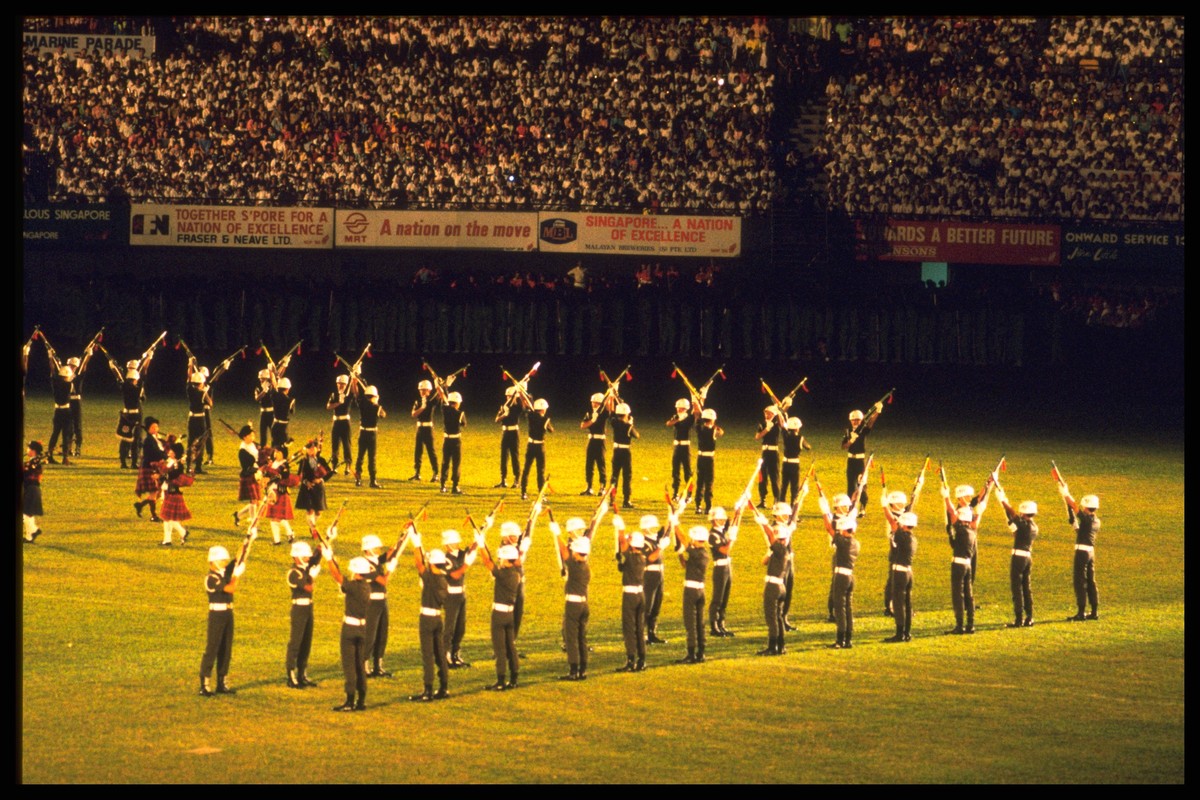Chng Soot Fong: The Queen of Amoy-dialect Cinema
Singapore artiste Chng Soot Fong (also known as Chong Set Png, Chong Sit Fong or Zhuang Xuefang) is a well-known getai performer and Amoy-dialect film actress.1
In 1947, at the age of 15, Chng became a prominent getai star in Singapore and Malaya. She had often visited the backstage of amusement park New World’s Ann Le Ting getai stage to listen to songs. Vivacious, eager to learn and in love with the stage, she caught the attention of Ma Rong (birth and death years unknown), a senior getai performer who taught her how to sing. Chng’s subsequent debut on the Ann Le Ting stage marked the start of her performing career.
At the time, most getai performers simply stood and sang. Chng, however, took a different approach, taking her cue from getai pioneers — including Bai Yan (1920–2019), who had moved from Shanghai to Singapore and developed a unique style that combined singing with dance movements. She also participated in stage drama performances, which contributed to her widespread fame. Chng later founded the Bai Xue Song and Dance Troupe and the Chng Soot Fong Opera Troupe. In the 1940s and 1950s, when long-distance travel was not common, she toured extensively with her troupes, performing in locations across Singapore and Malaya (as far as Kedah) and even the Philippines.


‘Queen of Amoy-dialect Cinema’
Having made a name for herself in the getai scene, Chng was invited to appear in Amoy-dialect films in their heyday in the 1950s. In 1957, she had a cameo in the Mandarin film The Lady of Mystery, showcasing her umbrella dance and silk dance skills. That same year, a Filipino-Chinese businessman named Shi Weixiong (birth and death years unknown) collaborated with Huaxia Film Distribution and Singapore’s Eng Wah Film Company and invited Chng to Hong Kong to star in an Amoy-dialect film titled The Wandering Songstress.
After finalising the terms with Eng Wah’s founder Goh Eng Wah (1923–2015), Chng flew to Hong Kong to embark on a film career. The Wandering Songstress premiered in Singapore in 1958 and was an immediate box office sensation. From that point onwards, Chng shifted her focus to cinema, and would go on to star in about 30 Amoy-dialect movies. Due to her fame and accomplishments, she was dubbed the “Queen of Amoy-dialect Cinema”.
After establishing her reputation in the industry, Chng founded her own Amoy-dialect film production company, Chng Soot Fong Film Company. The Amoy-dialect films Chng acted in and produced contributed to the prominence of Amoy-dialect cinema in the 1950s, helping to elevate it to a status on par with Mandarin and Cantonese-language films. Together, the Mandarin, Cantonese and Amoy-dialect film industries formed what scholars described as the “three-legged vessel” (sanjiao ding), or three pillars of Chinese-language cinema.
Despite her transition to the film industry, Chng did not completely abandon her singing career. It was popular at the time in the Chinese-language film industry to hold live stage performances alongside film screenings, where artistes would tour and perform in sync with the showing of the film. Chng, who had ventured into the film industry, frequently performed on stage in Taiwan and various Southeast Asian locations to accompany film screenings. Wherever she went, she often drew large crowds of fans, both film and music enthusiasts, who filled the venues to capacity.
Chng’s last film is generally thought to be the Taiwanese film Romance at Lung Shan Temple (1962), where she played a Chinese mainlander (waisheng ren) and spoke in Mandarin rather than Southern Fujian (Minnan) dialect which Amoy-dialect is part of. This reflected a wider trend where Amoy-dialect films were on the wane, being replaced by Mandarin and Cantonese films. She retired from the stage and film industry in 1971. As she gradually bade farewell to the scene, she returned to Singapore and largely limited her stage appearances to charity performances.



This is an edited and translated version of 南洋厦语片皇后:庄雪芳. Click here to read original piece.
| 1 | Getai, literally “song stage” in Chinese, refers to a type of live entertainment involving song and dance. |
Chng Soot Fong, oral history interview by Jesley Chua Chee Huan, 18 December 2009, National Archives of Singapore (accession no. 003425), Reel/Disc 1–35. | |
Ng, May, ed. The Amoy-dialect Films of Hong Kong. Hong Kong: Hong Kong Film Archive, 2012. | |
Su, Zhangkai, Yeo, Min Hui and Toh, Hun Ping. Xueni fangzong zhuangxuefang. Singapore: Lingzi Media, 2017. | |
Taylor, Jeremy E. Rethinking Transnational Chinese Cinemas: The Amoy-dialect Film Industry in Cold War Asia. London: Routledge, 2011. | |
Yeo, Min Hui. Women de dianying, women de jia: xiayu dianying yu xinma xiayu shenfen de jian bian (1948–1966) [Amoy-dialect Cinema and Dialect Identity Transformations in Singapore and Malaya (1948–1966)]. Singapore: Global Publishing and Centre for Chinese Studies @ SUSS, 2020. |










